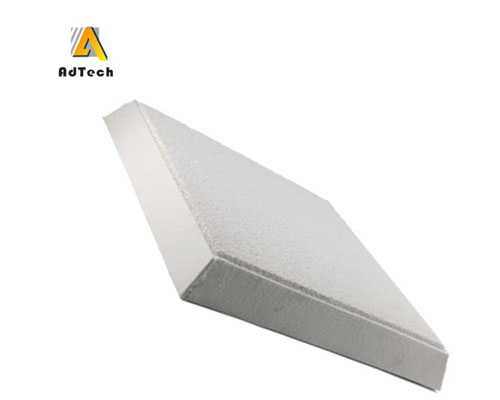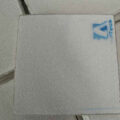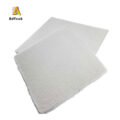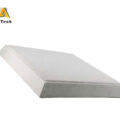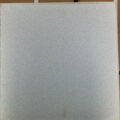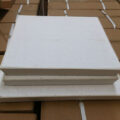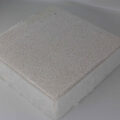The porous ceramic foam filter is suitable for filtering non-ferrous metals, such as aluminum, magnesium, and alloys of these metals. Porous ceramic filter for molten aluminum is mainly based on calcined alumina (Al2O3) as the core material and uses silica as a binder, preferably in the form of colloidal silica. Other adhesive materials including organic and inorganic adhesives can also be used, including, for example, organic adhesives, such as Duramax TM 1000 (acrylic-based ceramic adhesive), and inorganic adhesives, such as borate glass powder and Boric acid. In addition, the slurry composition for making the filter may include one or more other ingredients selected from water, polymer binders (such as PEG (polyethylene glycol)), and rheology modifiers (such as bentonite) ), dispersants, and other materials.
Conventional ceramic foam precursor technology can be used to manufacture the ceramic foam filter of the present invention. These porous ceramic filters for molten aluminum manufacturing techniques usually include: preparing an aqueous slurry, impregnating the foam precursor with the slurry, and then extruding the excess slurry from the foam precursor, and controlling the drying of the coating precursor to removing the liquid phase, thereby using The aqueous slurry coats the foam precursor. The slurry. The drying step uses organic binders and colloidal silica to form a rigid “green state” product. The filter is then calcined by placing the dried, unprocessed product in a kiln (such as a tunnel kiln) and subjecting it to a calcination process that may include multiple thermal gradients and time periods. These ignition steps and time periods ensure that multiple critical manufacturing steps are met. These measures include vaporizing the foam precursor, activating one or more inorganic binders, and controlled cooling to minimize thermal shock after peak temperature bonding.

